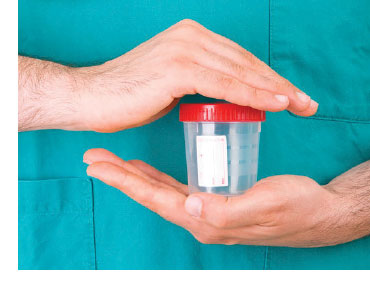The Importance of Obtaining First Catch Urine Samples for Chlamydia trachomatis and Neisseria gonorrhoeae Testing

Urine specimens are being used with increasing frequency to detect Chlamydia trachomatis (CT) and Neisseria gonorrhoeae (NG) in adult and adolescent patients. Urine specimens have advantages because they are non-invasive and easy to collect but these specimens will detect up to 10% fewer infections compared with vaginal and Endocervical swab samples. 1 A contributing factor in the reduced sensitivity of urine specimens relates to confusion about specimen collection for sexually transmitted diseases (CT/NG) versus urinary tract infections. Urine collection procedures for these entities are quite different.
Why First-Catch Urine Specimens?
In males, CT and NG infections most often present as a purulent urethritis. During infection, mucus, lymphatic fluids, and white blood cells fill the urethra to produce what street parlance refers to as “The Drip.” This purulent fluid also contains the offending microorganisms. By catching the first 5-20 mL of the urine stream, the urine will contain sufficient organisms for detection.
| In Males | By catching the first 5-20 mL of the urine stream, the urine will contain sufficient organisms for detection. |
| Collecting a larger sample will dilute the organisms and decrease the probability of detection. | |
| Likewise, a midstream urine collection can produce false negatives because most of the organisms have been flushed from the urethra before collection is initiated. | |
| When collecting a male urine specimen, it is important to assure that the patient has not urinated for at least an hour prior to collection. This will allow the organism-laden fluids to accumulate in the urethra and be collected in the first catch urine stream. |
In females, the predominant presentation for CT and NG infection is a purulent cervicitis. In response to infection, the body produces an organism-laden fluid consisting of mucus, lymphatic fluids, and white blood cells. This fluid flows downward toward the vaginal opening and is collected in the labial folds. Some of this fluid discharge ends up in front of, and just inside the urethral opening. In a first-catch urine collection, the first part of the urine stream carries the organism-laden discharge into the collection cup.
| In Females | Only the first 5-20 mL of urine should be collected. |
| Collecting a larger sample will dilute the organisms and decrease the probability of organism detection. | |
| Cleansing the labial area prior to urination (clean catch collection) will remove most of the organisms from the labia and the urethral opening thereby increasing the probability of a false negative result. | |
| Likewise, a midstream urine collection can produce false negatives because most of the organisms have been flushed from the urethra and labia before collection. | |
| Clean catch midstream specimens are the worst possible specimens. It is unlikely that these specimens will produce a positive result. | |
| It takes time for the purulent discharge to re-establish itself in front of and within the urethral opening. It is therefore important to assure that the patient has not urinated for at least an hour prior to specimen collection. |
What is the Purpose of the Clean Catch and Clean Catch Mid-Stream urine collection?
Clean Catch and Clean Catch Mid Stream urine collections are used to detect urinary tract infections other than STDs. These collection procedures were designed to minimize the collection of normal bacterial flora present at the opening of the urethra. For STD testing, we need a dirty collection.
What is the sensitivity of urine specimens for CT and NG detection?
In women, urine specimens can detect up to 10% fewer infections when compared with vaginal and endocervical swab samples. 1
In men, the performance of male first catch urine samples as equivalent to, and in some situations superior to, urethral swabs 1.
What is the stability of urine specimens?
Raw urine in a sterile urine collection device is stable for 24 hours when refrigerated at 2-8oC.Specimens should not be stored at room temperature because the white cells in the specimen will destroy the organisms and their nucleic acids. Specimens are stable for 4 days when stored in a standard (-20oC) freezer.
Urine specimens that have been transferred to Aptima Urine Transport tubes within 24 hours of collection are stable for 30 days when stored refrigerated or at room temperature (2-30oC). Specimens in Aptima Urine Transport Tube are preferred due to their longer stability at a wider range of temperatures.
How much urine do I transfer to the Aptima Urine Transport Tube?
Transfer 2 mL urine to Aptima Urine Transport Tube. The correct volume of urine has been added when the liquid level is between the fill lines on tube label. Urine transport tubes are available from Warde Medical Laboratory. Contact Warde customer service for ordering information.
Literature Cited
- Papp JR, Schacter J, Gaydos CA, and Van Der Pol B. Recommendations for the Laboratory-Based Detection of Chlamydia trachomatis and Neisseria gonrorrhoeae – 2014. MMWR 63(RR02); 1-19.

